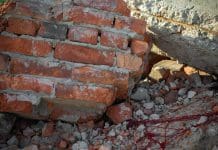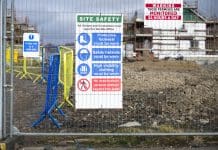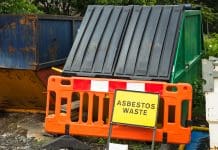A new report has called on the Institution of Civil Engineers (ICE) to play a bigger role in empowering engineers to improve the safety of infrastructure
The In Plain Sight report was commissioned following the tragic Grenfell Tower fire and launched at an evening event at ICE’s London headquarters. It makes recommendations which, when enacted, will help to improve the safety of infrastructure across the built environment.
Tim Broyd, former-ICE President, asked Professor Peter Hansford to chair a panel tasked with considering the state of current infrastructure and advise on whether any significant risks were ‘hiding in plain sight’.
An interim report was published last November. The final report challenges ICE, as a key industry institution, to lead on efforts to look at the industry’s safety of infrastructure.
It makes 11 recommendations, aimed at ICE and the wider industry, across the areas of lesson-sharing, competence and governance.
The recommendations include:
- Strongly promote the Swiss Cheese Model concept of risk management, emphasising that all engineers have roles to play in mitigating and managing infrastructure risk.
- Work with professional bodies to scope, sponsor and find funding for a sector-wide organisation to review, comment on and disseminate lessons from concerns, near misses and catastrophic incidents, building on the work of Structural-Safety.
- Run an annual event with HSE on infrastructure near misses, incidents or forensic reports, to promote understanding.
- Encourage engineers to highlight unaddressed infrastructure concerns, risks and near misses to their management.
- Establish an electronic system that captures ICE members’ CPD activities, increasing tenfold the CPD returns audited annually; and work with the Engineering Council to explore introducing periodic mid-career peer reviews.
- Identify and communicate mandatory risk-related topics, themes and reading lists for members to include in their annual CPD learning.
- Strengthen awareness of ICE’s Code of Professional Conduct through guidance, education, disciplinary processes, sanctions and publicity.
- Work with Government to identify any new safety-critical asset classes requiring lifecycle statutory certification.
- Set out the responsibilities of a competent infrastructure owner and work with Government to promote a voluntary charter.
- Work with other professional institutions to promote a whole-systems multi-disciplinary approach for the lifetime safety of infrastructure assets.
- The chief officers of ICE and relevant professional institutions to maintain a coordinated disaster response capability and triage decision-making process, to help Government and the authorities respond to an infrastructure incident.
Professor Peter Hansford, panel chair, said he was looking forward to seeing the whole construction sector take forward the recommendations.
“As professional engineers, we already know many of the factors that can contribute to the risk of infrastructure failure and we must remain diligent and critical to ensure they don’t stay hidden.
“This report is about empowering us to have a voice throughout the whole life of the infrastructure we design, construct and operate,” Hansford commented.
Kyle Clough, ICE Vice President, said: “It is essential that professional engineers feel able to speak up about any concerns they might have, and are provided with a clear, confidential way of doing so.
“Further, it is only by sharing the knowledge about these concerns, accidents or near-misses that the industry can learn and take the necessary steps to stop them happening again.”
The report will be presented to the ICE Council in December, where a decision to endorse the recommendations will be made.













